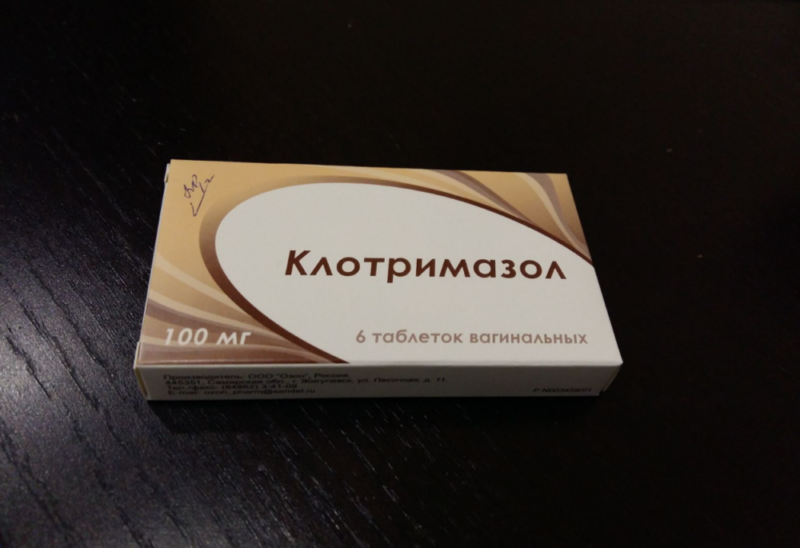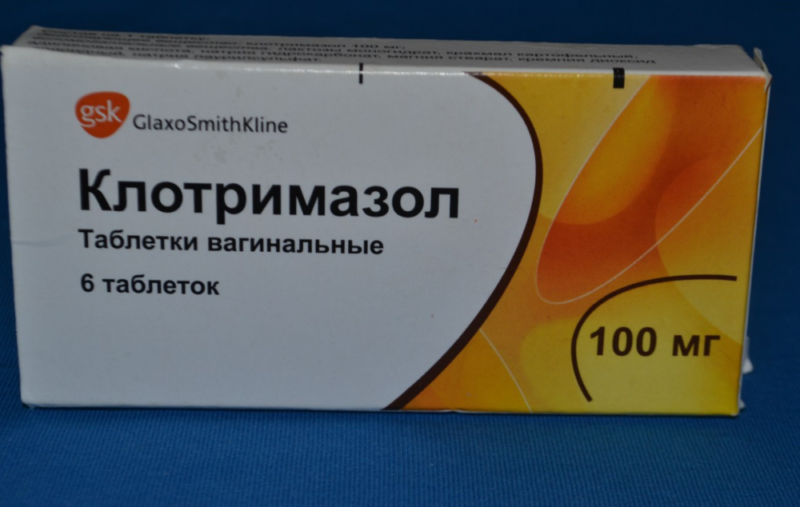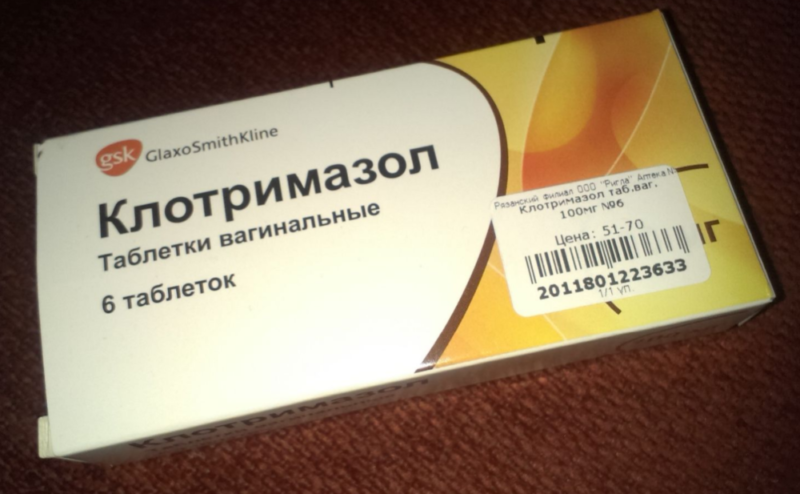Stress, poor ecology and poor nutrition negatively affect women's health. Therefore, most young girls face various diseases in the genital area. Clotrimazole tablets are considered a popular and universal remedy.
Material Content:
The composition of the drug
Vaginal tablets of clotrimazole contain the same active substance in an amount of 100 mg. As additional components, corn starch, milk sugar, soda, magnesium stearate, aerosil and tartaric acid are used. There are 6 pieces in a pack, which is enough for a full course of treatment.
A medicine is also produced in the form of an ointment. The concentration of the active component in it is 2 g per 100 g of the drug. It is injected into the vagina with a special applicator.
The drug belongs to antiprotozoal, antibacterial and antifungal agents. By its chemical structure, clotrimazole belongs to imidazole derivatives. It acts by stopping the production of proteins and nucleic acids in the cell, as well as violating the integrity of the membranes. As a result, cavities form inside the cytoplasm that completely destroy the pathogen.
Pharmacological properties
Clotrimazole is able to stop the formation of ergosterol, which forms the basis of the membrane of the fungal cell.As a result, its permeability in both directions increases, because of which salts of phosphorus and potassium come out from the inside, nucleic acids are destroyed. It also acts on enzymes with peroxidase and oxidative activity. Hydrogen peroxide accumulates in the cytoplasm, initiating organelle necrosis.
Fungistatic and fungicidal actions are noted. The drug stops the development of blastospores of candida fungi, which prevents their penetration. The effect against actively developing forms is higher than against vegetative ones. Clotrimazole also affects dermatomycetes and microorganisms that cause multicolored lichen.
Among bacteria, staphylococci and streptococci, as well as bacteroids and microorganisms that cause gardenellosis and erythrasma, are sensitive to the drug. When prescribing a high dosage, it affects Trichomonas. Only Candida guillermondii are resistant to clotrimazole.
The medicine in local forms is not able to penetrate the mucous membranes, the skin and acts superficially. But with intravaginal administration, it reaches the stratum corneum and accumulates in it, as well as the depth of the epidermis. Neutralization occurs in the liver, and excretion occurs with feces.
Clotrimazole did not show carcinogenic activity when performing experiments on rats for 1.5 years of research. When using a five-fold dose of the drug on hamsters, no changes in germ cells were found. In pregnant rodents, an experiment was conducted with the introduction of the drug intravaginally. With this method of application, the results showed complete safety of the substance.
In an experiment with rodents, some animals were given a 120-fold amount of the drug orally. In this case, a toxic effect on the embryos was detected. As a result, fewer mice were born, and some died at an early age. When the concentration was reduced to 60 times the human dose, unpleasant effects were not detected.
What is Clotrimazole prescribed for?
The most common prescription of clotrimazole tablets for thrush. But the drug also helps with other diseases.
These include:
- dermato- and epidermophytosis;
- infection of the genitourinary system in pregnant women of unspecified etiology;
- onychomycosis;
- candidiasis of the skin;
- trichomoniasis of urogenital localization;
- paronychial fungal etiology;
- multi-colored lichen;
- erythrasma;
- stomatitis of candidal origin;
- inflammatory diseases of the vulva and vagina with an infectious disease not associated with the reproductive system;
- pyoderma;
- microsporia;
- balanitis;
- erosion of fungal origin, localized between the fingers.
The drug can be used to sanitize the birth canal in pregnant women in the later stages. This helps prevent the baby from becoming infected if the mother has latent infections. For a newborn, the medicine is completely safe and carries no risks.
Instructions for use of tablets
As a prevention of infection of a newborn in childbirth, the drug is injected into the vagina once in the amount of 1 vaginal tablet. When the cervix is opened by more than 3 cm, the procedure is not performed. In this case, a chlorhexidine solution is used for processing.
As a treatment for vaginal discharge during genital tract infections, 1 tablet is administered at night. To do this, a woman lies on her back, she bends her legs and introduces the drug intravaginally. When applying the cream, 5 g of the drug is used in a special applicator, which is used in the same way. The course of therapy takes 6 days, after which repeated tests are taken to determine the success of treatment.
During pregnancy and lactation
In the early stages of pregnancy, the drug is not prescribed due to the lack of medical research in these groups of patients. In the II and III trimesters, clotrimazole is safe when used intravaginally. But cream forms in these groups are not used due to the presence of an applicator. During lactation, the medicine is taken under the supervision of a specialist.This is due to the fact that the ingestion of the active substance in milk is not proven in any way.
Drug interaction
Clotrimazole can interact with antibiotics of the polyene group (nystatin, amphotericin B, natamycin). They reduce the strength of each other. Therefore, using them at the same time is not recommended.
Contraindications, side effects and overdose
The drug is safe, therefore, it is contraindicated only if there is an allergy to the components in its composition.
Among the side effects are the following:
- feeling of itching;
- redness;
- hives;
- swelling;
- blisters;
- tingling sensation;
- peeling of the epidermis;
- burning, including on the penis in men;
- frequent urination;
- irritation;
- intercurrent cystitis;
- soreness of sexual contacts.
If undesirable symptoms occur, you should consult a doctor for treatment correction. The same should be done when signs of an overdose appear. It is expressed in drowsiness, bouts of nausea, anorexia, vomiting, abdominal pain, pollakiuria, allergic manifestations and hallucinations. In such cases, sorbents and gastric lavage performed by a medical professional are used.
Antifungal analogues
There are a large number of drugs with a similar effect.
Among the analogues, the most similar are:
- Candide cream with a concentration of 1% and a mass of 20 g, a solution of 1%, a volume of 15 or 20 ml, and a powder of 1% with a weight of 30 g - topical agents on the skin;
- Mikotrin in the form of a cream for feet in a tube of 40 ml;
- Candide-B6 tablets for vaginal administration of 100 mg in an amount of 6 pcs. packaged;
- Candide tablets in a dosage of 500 mg, 1 pc. in a pack.
The counterpart for the preventive treatment of the birth canal of women are Hexicon candles. They have disinfecting properties due to chlorhexidine in the composition of the drug. The medicine is absolutely safe for pregnant and lactating mothers, as well as for newborn babies.
Clotrimazole acts on a large number of pathogens, therefore it is prescribed for a wide list of diseases. The drug has a high level of safety, which allows its use by pregnant women. Analogues of the drug are higher in price, but do not overtake the original remedy in effectiveness. Therefore, clotrimazole is usually not necessary to replace them.


















